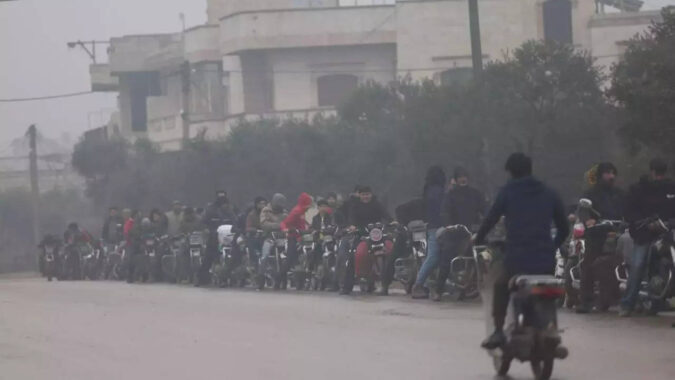President Bashar Assad issued the two decrees just before midnight Tuesday as the Syrian pound’s value against the U.S. dollar declined to a new all-time low, down from 7,000 at the beginning of 2023 to 15,000 pounds to the greenback. At the start of the conflict in 2011, the dollar was trading at 47 pounds.
For over a year, Damascus has been restructuring its program of subsidies for gasoline, diesel for heating, and bread. At the launch of the restructure in February last year, Syrian Prime Minister Hussein Arnous said the move to scale back fuel subsidies would allow the program to target the poorest families more effectively as well as reducing the Syrian state’s deficit.
Though wheat and bread subsidies have not been affected, the move has sparked rare protests in the country, as families struggle to cope with skyrocketing inflation. Syria hiked fuel prices Wednesday, soon after Assad’s decree, further rolling back state subsidies.
“The national economy is in a clear state of instability, most notably rapid rise of the currency exchange rate,” Arnous told Syria’s parliament in a speech late last month, warning that financing government spending through debt and borrowing from the central bank is not sustainable.
Syria’s last wage hike was in December 2021, where Assad raised civil service salaries by 30%.
The increase in wages might be an immediate relief for Syrians, but would be temporary at best as its economic situation continues to worsen, Sam Heller, fellow at New York-based think tank Century International, told The Associated Press.
“It seems likely to fuel inflation and thus worsen the continued depreciation of Syria’s currency,” he said.
The Syrian Observatory for Human Rights, an opposition-linked war monitoring group based in Britain, said that hours after the decree was issued, fuel and produce prices increased, as public discontent over the dire economic situation worsens.
Syria’s currency has been depreciating since 2019, further worsened by neighboring Lebanon’s economic meltdown and Covid-19. However, the recent wage hike and a massive government payout to this summer’s wheat harvest have increased the amount of money circulating in the market.
“This (wage) increase is all but wiped out following the increases in fuel prices and recent depreciation in the Syrian pound,” Karam Shaar, nonresident senior fellow at Washington-based think tank the Newlines Institute, told the AP. “(It) will feed into local (market) prices in a month or two fully.”
Syria’s uprising turned-civil war, now in its 13th year, and Western-led sanctions have pulverized the country’s economy. In February a deadly 7.8 magnitude earthquake further devastated its already damaged homes, water, and electricity infrastructure, especially in the ruined city of Aleppo. Experts say that the Syrian government’s rampant corruption and mismanagement of public funds have worsened matters.
The United Nations estimates that 90% of Syrians in government-held areas live in poverty. More than half the population – some 12 million people – struggle to put food on the table, the U.N. estimates.
The figure is similar for a northwestern enclave still held by the opposition.
In recent months, Arab governments that once endorsed Assad’s removal have restored relations with Damascus. Syria was welcomed back to the Arab League in May, after a suspension lasting more than a decade for its crackdown on protesters.
While there have been some early talks about a political solution that could lead to investment and aid from oil-rich Gulf monarchies, Western-led sanctions remain a key obstacle should any deals come to fruition.
